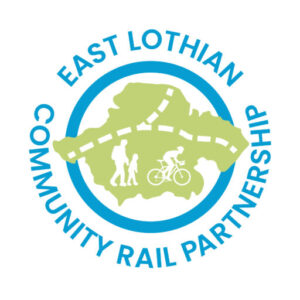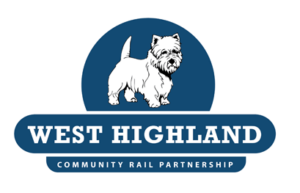Community Rail Scotland
Community rail is a unique and growing movement comprising of community rail parnerships and volunteer groups across Scotland that help communities get the most from their railways.
Community rail partnerships deliver a huge range of projects, bringing together local groups and partners along railway lines on community engagement and promotional activities. They promote understanding of the importance of local railways, interms of improving mobility and sustainable travel, community cohesion and wellbeing, and social and economic development.
Community rail partnerships in Scotland

Borders Railway Community Rail Partnership (CRP) covers ten stations from Edinburgh Waverley to Tweedbank. The CPR works to communicate the benefits of the railway and encourage local ownership of the line and its stations. it promotes active travel, e.g. walking/cycling, working with partners such as the Stow Community Trust, which has established community facilities and a cycle hub at Stow Station, and recently worked with the public to create a Transport Tapestry, linked to the Great Tapestry of Scotland, housed in Galashiels.

East Lothian Community Rail Partnership covers nine stations from Edinburgh Waverley to North Berwick and East Linton. Priorities include the promotion of integrated and sustainable travel and the creation of fully accessible and welcoming station environments, with recent projects including scenic line guides and posters encouraging people to visit local attractions by rail, and a series of new murals at Prestonpans Station celebrating the transport and industrial heritage of the town.

Far North Line Community Rail Partnership (CRP) is Scotland’s newest CRP and covers 19 stations on the northern part of teh Far North Line, from Fearn to Wick and Thurso. The CRP works with local communities to improve mobility, encourage sustainable tourism and enhance station facilities. In 2024, the CRP organised a 150th anniversary event to commemorate the opening of the line from Helmsdale in 1874, and it is currently developing promotional material for must-see attractions accessible from Far North Line stations.

Highland Main Line Community Rail Partnership (CRP) covers eight stations from Dunkeld & Birnam to Carrbridge. Key priorities include promoting the history of the line and celebrating the heritage and culture of communities linked by the railway, and encouraging sustainable tourism by rail. The CRP has recently supported the formation of the community-led Dunkeld & Birnam Station Action Group, and a new friends’ group at Blair Atholl, who are now undertaking an intergenerational arts project and a feasibility study on revamping a disused station building for community good.

Rail 74 Community Rail Partnership (CRP) covers six stations between Rutherglen and Hamilton Central and Motherwell. The CRP uses rail to help raise attainment and aspirations among communities along the line, seeking to alleviate poverty and social deprivation. Recent projects have included working with local businesses and social enterprises to develop station artwork, and a focus on improving mental health, with a new ‘Inclusivity Matters’ initiative supporting people with autism and their families to access rail and increase travel confidence.

South West Scotland Community Rail Partnership (CRP) covers 17 stations from Ayr to Stranraer and Kilmarnock to Gretna Green. Key priorities include encouraging sustainable tourism by rail and promoting local heritage and history, and the CRP has recently worked to develop station facilities at Barrhill, community rooms at Girvan Station, and ‘Art at the Station’ events.

Strathallan Community Rail Partnership (CRP) covers Gleneagles, Dunblane, and Bridge of Allan Stations. The CRP aims to promote integrrated sustainable transport b developing accessible rail and countryside networks, including downloadable walking guides for routes along the line. It is also seeking to transform vacant space at Gleneagles Station for community use, and working to improve the rail/bus links serving the station.

West Highland Community Rail Partnership (CRP) covers all stations from Crianlarich to Mallaig. The CRP works to make reail travel attractive for both locals and visitors, ringing together community groups with a focus on sustainable transport. Recent projects have included development of the Glenfinnan Viaduct footpath and interactive app, and the creation of ‘Benighted on the Moor’, a West Highland Line audio drama and series of geolocated walks based on a true railway adventure back in 1888.

6VT Youth Community Rail Partnership (CRP) covers various stations and lines in and around Edinburgh. The CRP, the only youth-led partnership in Britain, gives young people a voice in rail and transport development, broadening their horizons and travel options. The CRP members enjoyed a trip on the Hydroflex train when Scotland hosted COP26, and recent project have included the created of ‘Tracks and Trains’, a board game designed to teach rail safety to young people, and supported train journeys for young adults with addional needs to improve travel confidence.

